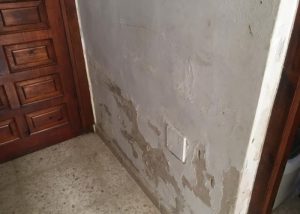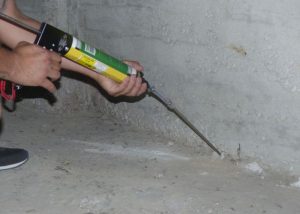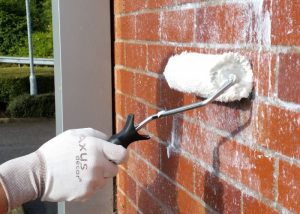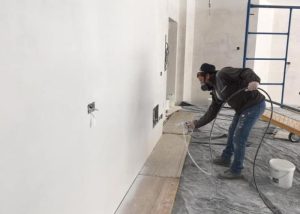A major problem for homeowners in Spain is moisture. Especially if they own an old or poorly insulated house or have a home in rainy or coastal areas. In Spain, more than half of the homes (54%) suffer from excessive humidity.
However, excessive moisture or dampness in the house may be the last thing on your mind in the middle of summer. But it is important to be ready for the Spanish winter with a healthy, moisture-free property. Moreover, you CAN create a healthy living environment even with an old or poorly insulated house.

Health problems due to moisture
Not all dampness in the house is caused by environmental factors such as the weather or poorly made insulating layers. Our activity in the home, from breathing to showering and cooking, also contributes to the humidity. All these factors, can cause it to rise above recommended levels. According to experts, the ideal values are between 40% and 60% relative humidity. If it is above that, health problems can result. This is in addition to other difficult-to-solve problems within your home.
Above 60% relative humidity, the chance of survival of airborne bacteria and viruses that cause diseases such as respiratory infections, flu or colds increases. Furthermore, if the humidity is above 85%, populations of mites and fungi reach their maximum size.
A report from the World Health Organisation WHO shows a direct link between the presence of moisture in buildings and the risk of respiratory infections, asthma, bronchitis and allergic rhinitis. Certain rheumatic diseases can also be made worse by living in a humid environment. In fact, according to a recent study published in the journal Physics of Fluids, humidity increases the risk of coronavirus infection by extending the virus’ survival in the air by up to 23 times.
Leaks, capillarity and condensation

Most moisture that appears in homes does so in three ways: through leaks (water coming from outside); by water from the ground rising through the walls (capillarity) and by condensation on walls and ceilings. The latter occurs when the surfaces are so cold that water vapour in the air turns into liquid in contact with them. The most common and noticeable result of excess moisture in the home is the appearance of dark spots on walls and ceilings, damaged plaster, mould in corners and musty odours.
Workarounds
If you have moisture problems and want to take care of your health and that of your family, there are measures you can take and products available to help keep this annoying problem at bay. Or, even better – prevent it!

Ventilate your house regularly, keep your bathroom and kitchen doors closed, use your extractor hood, put a few plants in your house or buy dehumidifiers. In winter, a less humid house also feels warmer. However, please note these measures will only help remove excess water, but will not solve major moisture problems.
If you have detected moisture spots, the Spanish consumer organisation OCU advises acting quickly to correctly diagnose the problem. Possible solutions can be very different. Therefore, it is essential to find out where the moisture comes from. Simply painting over the stains, which is common practice in Spain, will not solve anything other than temporarily hiding your moisture problem.
Professional help for long-term solutions

If you do have a bigger moisture problem, it is important to call in professional help. Your home in Spain may be eligible for a rising damp treatment if the damp is already in your walls or floors. If you have annoying cracks in your (outer) walls, they can also be treated to prevent moisture from finding an entrance there. You can have this done with a polyurethane tear injection.

Prevention is always better than cure
If you have your walls painted in time with the correct exterior paint, that can put you ahead of moisture problems. Or what about good weatherproof paint for your roof? You might not immediately think of it, but in addition to all types of walls, you can also paint masonry with special water and dirt-repellent paint.
Paints that are phobic to water and moisture
ProPERLA is such a company in Spain that can handle all this for you. The company works exclusively with so-called ‘super hydrophobic coatings’. These are types of paint that are phobic to water and moisture. An additional advantage of that exterior wall paint is that it is also hyper dirt-repellent. This way you no longer have to fear the next ‘calima’ or Sahara storm and you save yourself hours of cleaning or an expensive facade cleaning company.
High-quality products

ProPERLA works exclusively with local and professional painters who are trained to apply the high-quality products correctly and to apply all their systems based on the latest technologies. The company has over 35 years of experience combining roof and facade water repellents with high-quality pigments and exceptional resins. ProPERLA products are tested and certified by independent laboratories.
The water-repellent primers penetrate deep into the subsurface of buildings and protect buildings for many years. There is even a 25-year performance guarantee on proPERLA® roofing products. Breathability and UV resistance are present in all moisture management systems. Furthermore, all systems are ecological and water-based. For more information, or to contact, click here.


